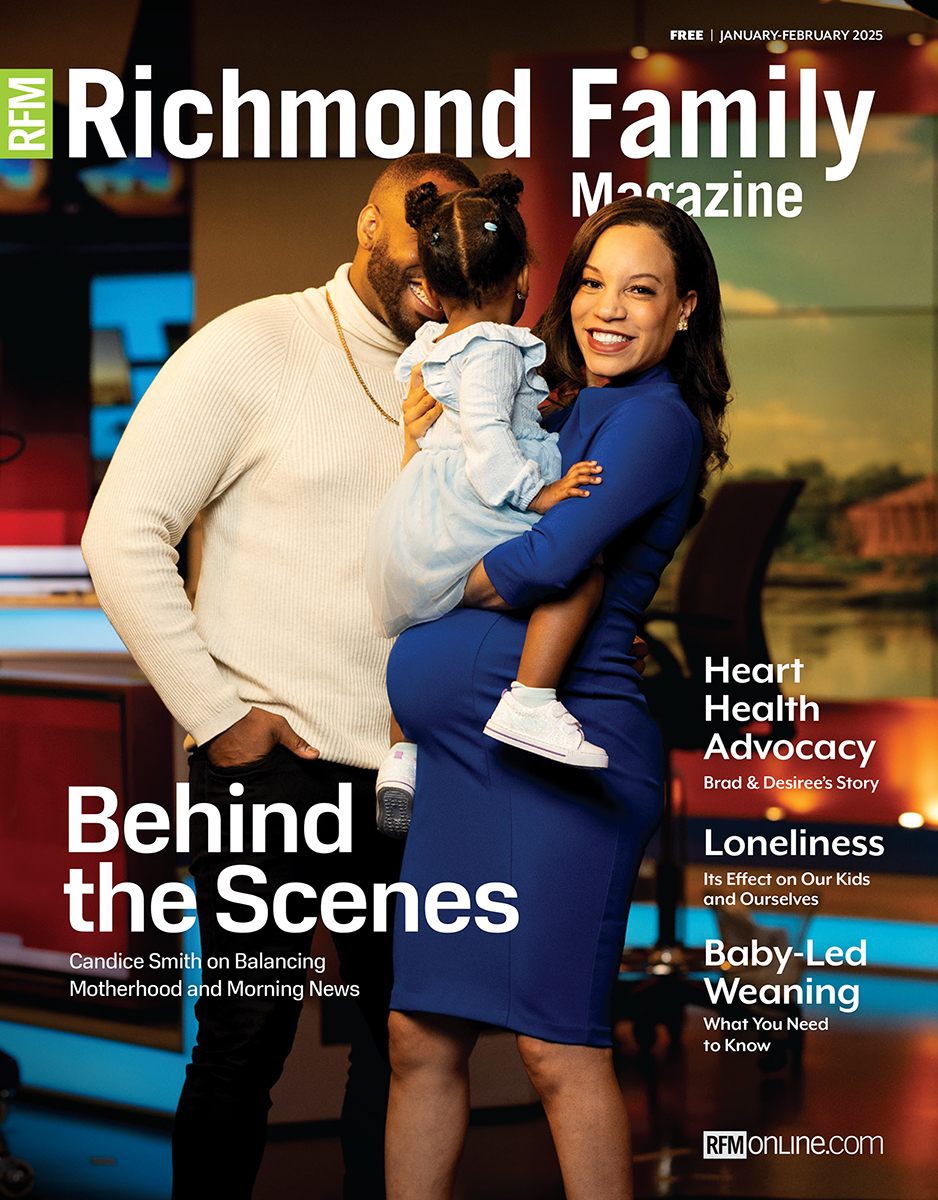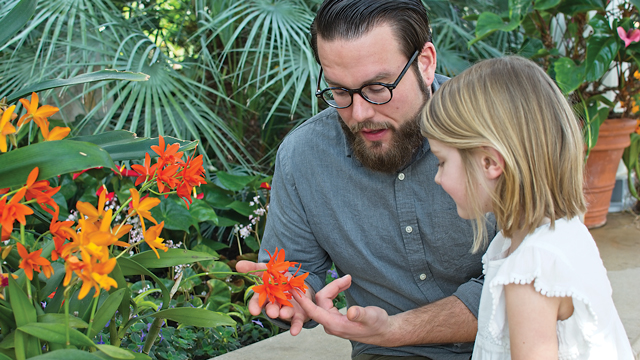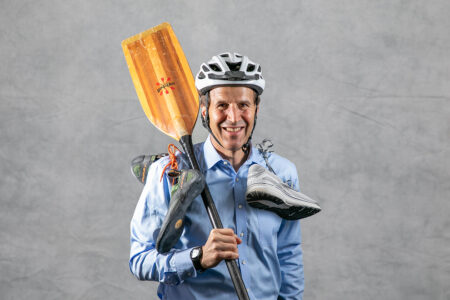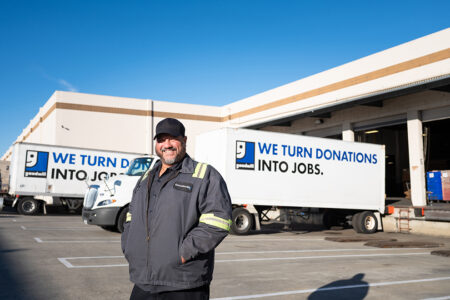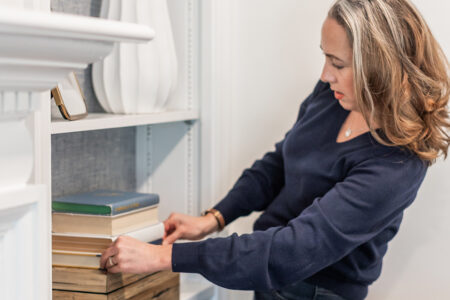What Can One Family Do?
As a prelude to the fiftieth anniversary of the first Earth Day, there is an international effort to educate people about the devastating effects of plastic on the planet. Do you ever wonder about the amount of plastic that’s used every day? If you’re like me, it bothers you, but it is such an ingrained part of family life these days that it seems nearly impossible to cut down on it, particularly given the convenience of plastic utensils and prevalence of plastic packaging. Sure, I try to bring my tote bags to the grocery store, but is that enough? What about the plastic bags used at the deli or for produce? What about the single-serving snacks that make packing lunches and eating on-the-go so much easier?
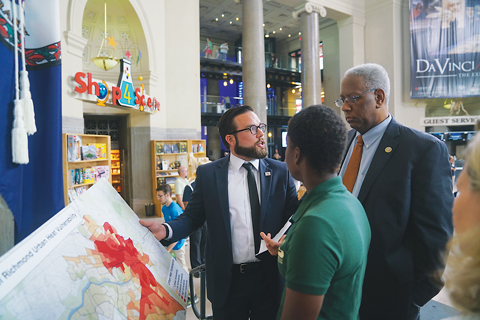
These questions are becoming increasingly important to address. That’s where Jeremy Hoffman comes in. A climate and earth scientist at the Science Museum of Virginia, Hoffman has a doctorate in geology and paleoclimatology, plus a fantastic feel for helping people understand the challenges of our changing environment. He uses humor as well as hands-on, interactive activities to make complex science topics easier to understand, and he is passionate about helping people become better stewards of the planet. “There’s already so much infrastructure in RVA to help people be environmentally friendly,” Hoffman says. “I’m helping spread the word.”
Elizabeth Farner, a mother of three, also has a desire to share her insights into making family life greener. A middle school guidance counselor, Farner has spent the past seven years trying to promote environment-friendly changes,
beginning at home with the family. She recently started a blog, A Little Less Trashy, to chronicle her journey, and like Hoffman, to help spread the word about living a more earth-friendly existence.
Keep reading for some completely doable, judgement-free suggestions about how we can all become better stewards of the environment.
Making Small Changes… Gamify It!
Inspired by books like Barbara Kingsolver’s Animal, Vegetable, Mineral, and Bea Johnson’s Zero Waste Home, Farner wanted to live a greener life, but felt overwhelmed. Was it really possible to limit her family’s trash for an entire year to one small glass jar, like Johnson had done?
Farner could have easily thought to herself, I can’t do this, so I won’t worry about it. Instead, she decided to minimize waste in ways that work for her family. For the sake of their budget and her sanity, Farner focuses on one change at a time. Once she has made the investment and that change has become routine, Farner moves on to another change. “I fit zero waste into a lifestyle that feels natural and comfortable for my family,” Farner says.
Farner’s path forward started with a pretty easy change: eliminating paper products in the kitchen by using cloth napkins and rags instead of paper napkins and paper towels. Although she made an initial investment in the cloth napkins, she has virtually eliminated her paper products budget, and has found a way to keep using old hand towels that are no longer fit for display.
It turns out, this small change makes a big impact. Americans use 13 billion pounds of paper towels each year. If each of us used one less paper towel each day, we could save almost 6 million pounds of paper.
Another small but worthwhile change? Turning off lights and unplugging appliances when you are not using them. “You can save a lot of money and reduce heat-trapping gases with that one change,” Hoffman says. He even encourages making a game out of it by keeping family members accountable for turning off lights when they leave a room.

Hoffman is passionate about engaging kids in making better choices; it’s a big part of his job at the Science Museum of Virginia after all. Gamify it! is a phrase he likes to use. He says that turning a few earth-friendly practices into games can help kids invest in the process. For instance, mount a basketball hoop on the recycling bin to make recycling more fun. Groundwork RVA recently did that at Armstrong High School to encourage students to recycle, and trashketball has been a great success.
Another one of Hoffman’s favorite small, but mighty changes is to just say no – to straws. The hashtag #skipthestraw has appeared frequently on social media ever since the Plastic Pollution Coalition started its “last straw” movement. The group hopes to cut down on the 500 million straws being used and discarded in the United States each day – enough to wrap around the earth’s circumference two and a half times every day. So the next time you eat out, ask your waiter to “skip the straw.” This easy change can help prevent plastic from entering the oceans.
If your kids really like using straws – like mine do – there are options. Farner uses stainless straws and carries them with her when they go out. She and her family also bring their own reusable water bottles around town. Last month, Farner kicked off her family’s quest to eliminate plastic in the bathroom. She and her husband bought stainless-steel razors to eliminate the waste created by disposables, and she and the kids gave up plastic shampoo and conditioner bottles and began using bar products. You’ll find bar shampoo products from local supplier, Freckled Farm, online and at area farmers‘ markets.
Shopping, Eating, Traveling: Make Your Changes Matter!
When incorporating changes, Hoffman recommends finding ways to connect with your kids and their interests. For instance, when talking to your kids about straws, explain how they can damage marine life. Several years ago, a well-watched video showed scientists removing a straw that had become embedded in a sea turtle’s nose. For kids who love ocean animals, Hoffman says that video highlights the importance of how a small sacrifice can benefit other living things.
If you’re at the beach this summer, you have multiple opportunities to talk about how cutting down on plastics helps keep the ocean beautiful. “The equivalent of 136 billion milk jugs go into the ocean every year,” Hoffman says. “Some scientists estimate there might be more plastic than fish in the ocean by 2050.”
Hoffman encourages this approach for any environment-friendly change. “Find that value in the earth that you or your kids appreciate, and focus on that,” he says. Kids, for instance, typically like bugs and butterflies. Talk to your children about the steps your family can take to improve the environment so pollinators will be more likely to visit your yard and other outdoor spaces.
The scientist recommends taking your child to the garden store with you to pick out native plants that will attract pollinators. “Also consider the co-benefits,” Hoffman says. “When you use native plants, you don’t have to water them as much because they have evolved to live here. So not only are you helping butterflies and bees, you’re also saving money on landscaping and protecting the health of the James River and the Chesapeake Bay.”
While you talk to your kids about native plants, you can also emphasize the importance of buying local foods. Hoffman explains that the average American dinner travels a combined total of 1,500 miles from its source to your table. That long distance leaves a large carbon footprint. By choosing local foods, you can help cut down on air pollution and fuel consumption.
Even food preparation can be gamified, according to Hoffman. “Work with your kids to create a 50-mile pizza or a 50-mile soup,” he suggests. Identify locally grown foods at grocery stores and shop at farmers’ markets with your family whenever possible.
When it comes to shopping for and feeding the family, Farner says grocery stores also provide opportunities to cut down on plastic consumption. Some stores, like Ellwood Thompson and Whole Foods, have structures in place for using less plastic at the deli or for produce. In fact, Ellwood Thompson regularly hosts a zero-waste shopping tour to help consumers eliminate shopping waste.
We all know it is not always feasible to shop at natural food stores because of cost or convenience, so Farner is helping to forge the road less traveled for the rest of us. Whenever she does her food shopping, she brings her own cloth produce bags and asks staff at the deli counter to put her items in a reusable container. Making these special requests is not always easy. “I have had to do some uncomfortable things to have less shopping waste,” Farner says, but she has found most stores have been receptive.
Farner’s focus on minimizing waste occasionally causes frustration and challenging moments among her husband and kids. At times, the kids wish they could bring home little plastic trinkets from the dentist office, but Farner says they’re usually on board with her choices. Throughout the process, Farner has tried to make their house as green as possible while still being sensitive to her family’s needs. “I am not perfect, and I am not judging,” she says. “There are changes I could make, but choose not to because it’s easier.” Farner has found, though, that it is better to make some changes than none, and she wants to be one more voice encouraging people to make small changes that can do big things for our planet.
The History of Earth Day
What do the Vietnam War protest movement, a bestseller called Silent Spring, and a massive oil spill off the coast of Santa Barbara, California, have in common? All these factors led to the creation of the first Earth Day on April 22, 1970.
For decades, many citizens of developed nations were oblivious to environmental concerns, equating air pollution with economic prosperity. That’s right, more pollution meant more manufacturing. Until Rachel Carson authored the book Silent Spring in 1962, people had not yet connected the health of the human race to the health of the planet. Carson helped demonstrate that link, and the book, which sold 500,000 copies in twenty-four countries, began to raise awareness about the condition of the environment.
A few years later, in 1969, an oil spill in Santa Barbara, which allegedly spewed three million gallons of crude oil into the ocean, led U.S. Senator Gaylord Nelson to dedicate a day to raising awareness about pollution and the environment. Inspired by the student anti-war movement, Nelson, a Democrat from Wisconsin, wanted to harness that same level of energy to put environmental sustainability on the national agenda. Working with Republican Pete McCloskey as co-chair and activist Denis Hayes from Stanford as the national coordinator, Nelson chose April 22 because it fell between spring break and final exams.
Thanks to Nelson, McCloskey, and Hayes, and based on widespread participation, the first Earth Day was a success. On April 22, 1970, 20 million Americans demonstrated in rallies across the country. Earth Day garnered support from politicians across the spectrum and led to the creation of the Environmental Protection Agency as well as the Clean Air, Clean Water, and Endangered Species Acts.
Earth Day has been celebrated every year since 1970, but there have been major milestones along the way. In 1990, on the twentieth anniversary of Earth Day, for instance, the movement gained global momentum, with 200 million people in 141 countries putting environmental issues at the forefront. A decade later, in 2000, Earth Day focused on climate change and clean energy, this time using the power of the Internet to spread the message.
In 2010, Earth Day Network held a climate rally at the National Mall, bringing 250,000 people to the nation’s capital. The national organization also launched a global tree-planting initiative that has since grown into the Canopy Project, a movement to help reforest areas that need it most. In 2017, March for Science held non-partisan rallies and marches throughout the world to celebrate the role of science in our everyday lives.
This year, two years before the fiftieth anniversary of the first Earth Day, Earth Day Network is mobilizing the public to work toward ending plastic pollution. It’s an international effort to educate people about the devastating effects of plastic, promote alternatives to plastic, and work to keep plastics from polluting the oceans and beaches and clogging landfills.

